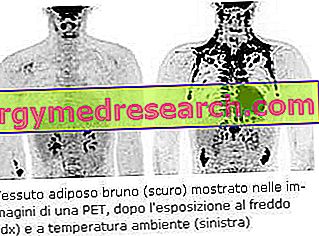Generality
The rabbit (European) is a mammalian animal of the order Lagomorfi or Duplicindentati *, family Leporidae, Genus Oryctolagus and Species cuniculus ; the American one, however, although similar, belongs to the genus Sylvilagus .
* Duplicates or lagomorphs (of which the rabbit is a part) are characterized by a rather peculiar set of teeth; in the upper arch, near the incisors, a further pair of small retro-incisors emerge (useful for cutting grass and bark), while the canines are ALWAYS absent. The dental structure of the rabbit includes:
- Upper band: 4 incisors, no canine, 6 premolars and 6 molars
- Lower band: 2 incisors, no canine, 4 premolars and 6 molars.
The upper lip of the rabbit is vertically divided into two portions (hence the name of the human anatomical defect called the cleft lip ). The ears are rather developed and vascularized, therefore useful for the dispersion of excess heat. The limbs have 5 fingernails (retractable) and are provided with bearings. The tail is short and on the belly has 6 udders in two parallel rows.
The rabbit has an excellent view (even twilight), excellent hearing and a good sense of smell.
The European rabbit, of which it will treat the following article, is a creature widely spread in the wild and bred in captivity, both for its meat (white), both for the hair and the fur. It is herbivorous (it feeds on grass, hay, bark, etc.) with coprophagous ( blind ) and * very voracious habits; all rabbit breeds are extremely prolific and make use of a rather rapid growth process (which is why it is particularly suitable for breeding).
* The coprophagy of the rabbit towards the soft stools ( ciecotrofe, NOT the hard ones) constitutes anything but a hygienically questionable habit; by reusing its own cecal soft faeces, the rabbit puts in place a sort of "external cycle rumination" which allows it to recover most of the previously digested but not absorbed nutrients and many vitamins processed by its own bacterial flora.
The European rabbit can be further divided into wild rabbit and domestic rabbit, both creatures found on the Italian peninsula.
Wild rabbit
The wild rabbit has probably Spanish or north-western African origins. It was imported into Great Britain and Germany by the legionaries of the Roman Empire, who ate their meat frequently.

The wild rabbit reaches a total length of 35-45cm, the ears are about 6-8cm and the weight is between 1-1.5 and 2kg. The teeth include 28 teeth and the coloring is almost totally gray-tawny; the lower parts are lighter, almost white, and the tip of the tail is black.
Domestic rabbit
As anticipated, the domestic rabbit is bred mainly for meat, fur and fur, but recently it has found a large space as a pet (especially in dwarf shapes). The domestic rabbit has been selected in numerous different species for: shape, colors and size. NB .

The most common domestic rabbit breeds for the breeding destined for slaughter (therefore for human consumption) are the white of New Zealand and California, pure or crossed with the fawn of Burgundy, the Blue of Vienna, the Argent of Champagne and the white giant.
Currently, domestic rabbit farming, purely for fur production, is quite obsolete, whereas in the past it was more widespread; it was used essentially for the production of: jackets, coats, hats and gloves. NB : The most widely used domestic rabbits for this purpose are: the Rex (rabbit fur), the Angora (also used for high fashion garments), the Saint and the Fox.
Crossed domestic rabbits (frequently found at home or small farms) are more resistant to disease than the pure lines of origin.
For the nutritional properties of rabbit meat we refer the reader to this article.



